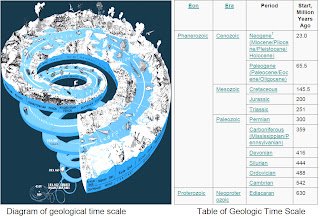Rocks and Minerals
Rock is a naturally occurring aggregate of minerals.
A Mineral is a naturally occurring substance formed through geological processes that has a
characteristic chemical composition, a highly ordered atomic structure and specific physical
properties.
Rock Types
are formed when molten magma cools off.
Igneous Rocks two types also:
A- Plutonic (Intrusive) Rocks: Form when magma cools and crystallizes slowly within the Earth’s crust (Granite)
B- Volcanic (Extrusive) Rocks: Form when magma reaches the surface (Pumice and Basalt)
Basalt (Igneous Volcanic)
The tracks in the rock indicate the way of the lava flow
2 - Metamorphic Rocks:
Rocks which have been modified in their original compositions by
means of heat, pressure and chemical alterations applied to them
means of heat, pressure and chemical alterations applied to them
two types also:
a- Foliated metamorphic rocks: have a layered or banded appearance that is produced by exposure to heat and directed pressure; Gneiss, Phyllite, Schist
b- Non-foliated metamorphic rocks: Do not have a layered or banded appearance; Marble, Quartzite
3 - Sedimentary Rocks:
are formed by the accumulation of sediments
Sedimentary Rocks (Classification based on the source of their Sediments)
a- Clastic: Form from rocks that have been broken down into fragments by weathering and erosion followed by transportation; Breccia, Conglomerate, Sandstone, Shale
b- Chemical: Form when dissolved materials precipitate from solution; Rock Salt (Halite), Limestone
c- Organic: Form from the accumulation of plant or animal debris; Coal
Sedimentary Rocks” cover 75-80% of the Earth's land
area and are the most Important group of rocks in
Petroleum Geology
area and are the most Important group of rocks in
Petroleum Geology
enjoy with us
like our page in facebook







